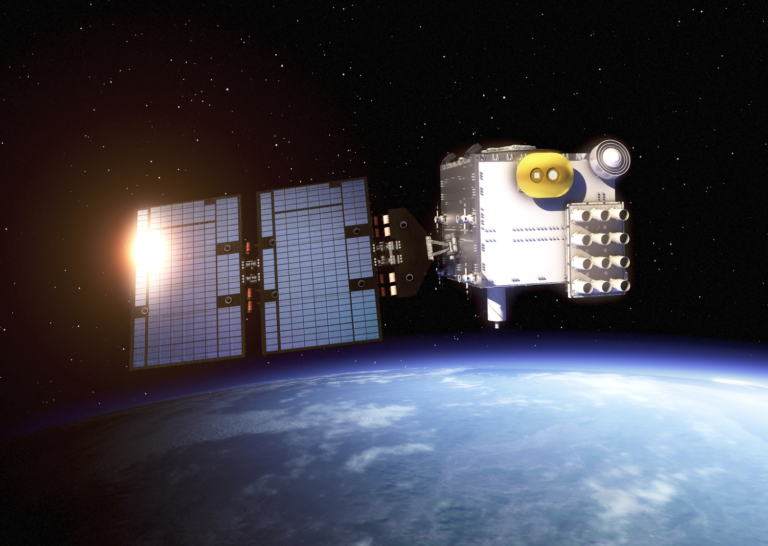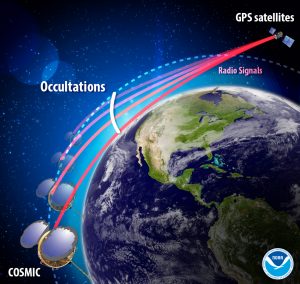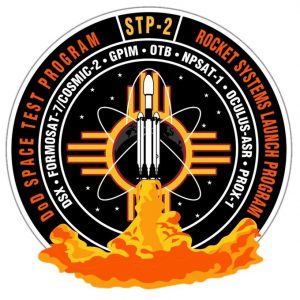
COSMIC-2, a mission of six satellites that will orbit the planet near the equator, is scheduled to lift off during a four-hour launch window which opens at 11:30pm ET on Monday, June 24 from Cape Canaveral, Florida, aboard a SpaceX Falcon Heavy rocket. COSMIC-2 is a partnership between the National Oceanic and Atmospheric Administration (NOAA), the U.S. Air Force and Taiwan’s National Space Organization. Information collected from these satellites should be especially helpful with hurricane forecasting in coming seasons.
Dr. Daryl Kleist, a Physical Scientist, with NOAA’s Environmental Modeling Center, told reporters this morning that COSMIC-2 will add “more tools to the toolbox” that meteorologists use to better understand and forecast the weather.

When successfully deployed, this team of COSMIC satellites will circle the equator at approximately 17,000 miles per hour and use a technique called radio occultation to collect information on the Earth’s atmosphere. Global Positioning System (GPS) satellites constantly send signals down to receivers on Earth, but those signals get distorted along the way because the density of Earth’s atmosphere changes with height. COSMIC-2 satellites can detect and measure any small bends in those signals before they are cut off by Earth’s horizon. The three-minute period before the radio signal is cut off is known as radio occultation, and that data are what gives scientists near real-time information about the Earth’s atmosphere including conditions such as: temperature, pressure, density and water vapor. This data is relayed to Earth and incorporated into weather forecast models used by the likes of NOAA’s National Weather Service and National Hurricane Center.
Each COSMIC-2 satellite, which is approximately between the size of a standard kitchen oven and a refrigerator, will carry the following instruments at launch:
- Tri-Global Navigation Satellite System Radio Occultation Receiver (TGRS)
This receiver provides high-quality cross sections of the atmosphere. It remotely senses temperature, pressure, moisture, and lightning formation in the atmosphere, all from space. It also measures electron density in the upper atmosphere. This device was developed by NASA’s Jet Propulsion Laboratory. - Ion Velocity Meter (IVM)
This instrument measures ion velocity in the upper atmosphere – a key metric for space weather predictions. Measuring ion velocity, concentration, composition, and temperature can help detect the effects of geomagnetic and solar storms within our atmosphere. This device is provided by the U.S. Air Force and was built by Ball Aerospace. - Radio Frequency (RF) Beacon
This instrument measures total electron content in Earth’s upper atmosphere to monitor space weather. Like the IVM, this device is provided by the U.S. Air Force.
At a 24-degree inclination in orbit, the COSMIC-2 constellation will take frequent measurements of the region where tropical cyclones, like tropical storms and hurricanes, form. High-resolution water vapor data coming from COSMIC-2 will help meteorologists better observe, research, and forecast these tropical cyclones.
In addition to Earth weather, COSMIC-2 will also help with Space weather monitoring. Space Weather experts within the National Weather Service’s Space Weather Prediction Center will be among the users of this new data stream. COSMIC-2 will provide the ability to monitor the effects of solar flares and other space weather on the Earth’s ionosphere, which will increase lead time for detecting events that could put electric grids and radio communications at risk.

COSMIC-2 will launch from Kennedy Space Center in Cape Canaveral, Florida on June 24, 2019. It will deploy into a low Earth orbit, 322 miles from Earth. COSMIC-2 is scheduled to fly on a SpaceX Falcon Heavy rocket as one of two main payloads that are part of the U.S. Air Force Space Test Program -2 or STP-2 mission. The 24 satellites included within STP-2 come from the U.S. military, NOAA, NASA, and academic institutions, pursuing missions ranging from weather observation to technology demonstration. Managed by the U.S. Air Force, this launch by SpaceX is the first military launch using their Falcon Heavy rocket.
The $75million price tag for the COSMIC-2 program includes development costs since 2014 and estimates costs through 2024, assuming 5 years of operation. After the launch on the 24th, it’ll take the satellites 18 months to separate into different orbit plains, with each of the 6 satellites in 6 different orbit plains around Earth.